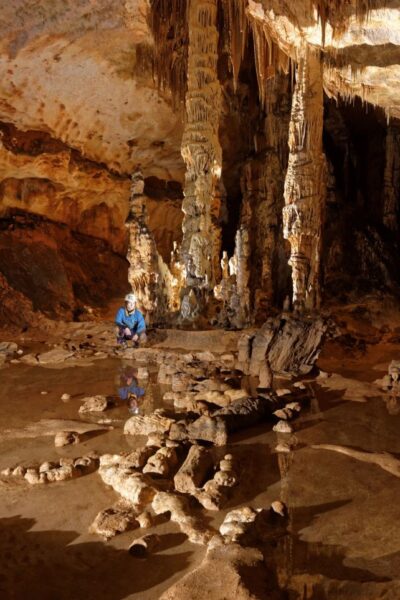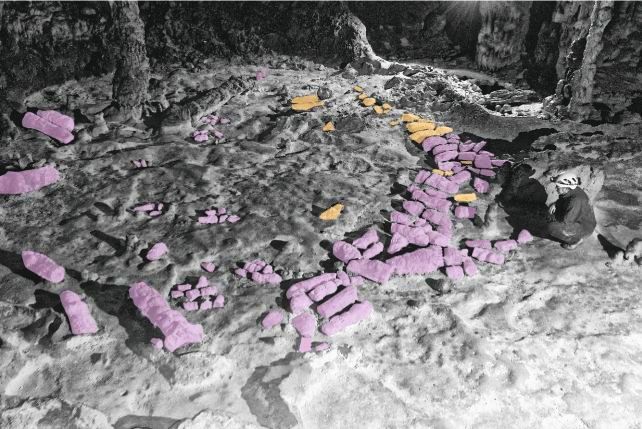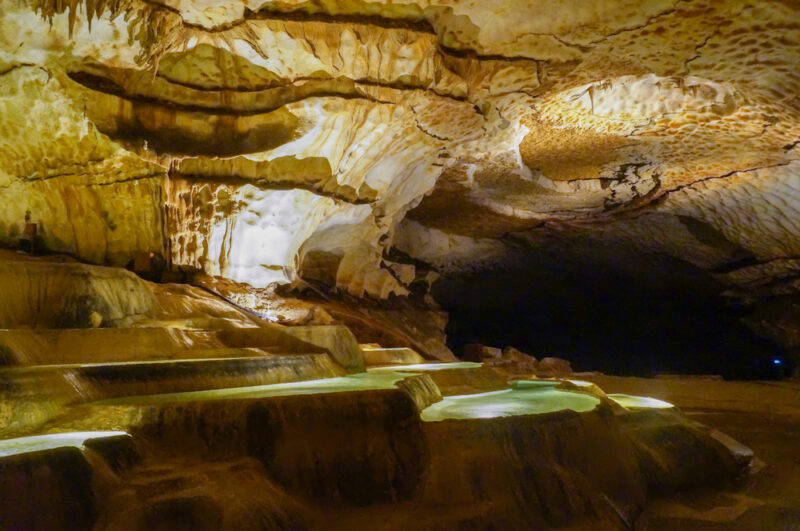The Saint-Marcel cave is one of France’s largest and best-researched cave systems. Its caverns and tunnels stretch underground for 64 kilometers. Humans have sheltered there since the Middle Palaeolithic era. Now, a new study proves that these ancient humans went far beyond the cave entrance. Somehow, they found a way to navigate this labyrinth.
Scientists discovered a series of broken speleothems — mineral deposits, like stalagmites — over a kilometer and a half inside the cave’s twisting pathways. At first glance, this does not suggest anything exciting. When many caves were first explored in the late 19th century, people often snapped off bits of the deposits as souvenirs. But some breakages deep within date back 8,000 years.

Speleothems in the Saint-Marcel cave. Photo: Delannoy et al
A broken stalagmite can regrow, as long as it has a steady supply of water. The water deposits minerals on the rock, which accretes or gets bigger. Lead author Jean-Jacques Delannoy and his team noticed that the broken stalagmite pieces had been arranged to create a structure in the cave.
The researchers dated the rocks with uranium-thorium dating. As uranium decays, it produces thorium, which is insoluble in water. By working out the ratio of uranium to thorium in the mineral deposits, they could figure out when those ancient cave dwellers had broken the stalagmites.
The speleothems themselves are between 125,000 and 70,000 years old. The breakages occurred 10,000 and 3,000 years ago — not during those 19th-century souvenir hunts. Finally, the structure in the cave dates to 8,000 years ago.
“The evidence for prehistoric human activity in the cave of Saint-Marcel is conclusive,” they state in the new study.

Bits of broken stalagmites (purple) and boulders (orange) were purposefully arranged 8,000 years ago. Photo: Delannoy et al
Speaking to the Proceedings of the National Academy of Sciences, Delannoy said, “This raises the question of cave knowledge at that prehistoric period, their ability to explore and cross shafts, and their mastery of lighting.”
The Saint-Marcel cave system is not easy to navigate. Nowadays, artificial lighting and walkways guide tourists easily through such caves. But without this, they are in complete darkness, and hazardous pits lie along the pathways. Even modern cave explorers find such a route challenging. So how did ill-equipped prehistoric people manage it 8,000 years ago?
The researchers are now trying to find that out. It is possible that they used oil lamps or torches. Soot deposits in the caves may reveal that. However, Delannoy accepts that many of the cave’s secrets will likely remain a mystery — why they went in so deeply, what drove them to create that structure inside it. “We no longer have access to their thoughts,” he admitted.






